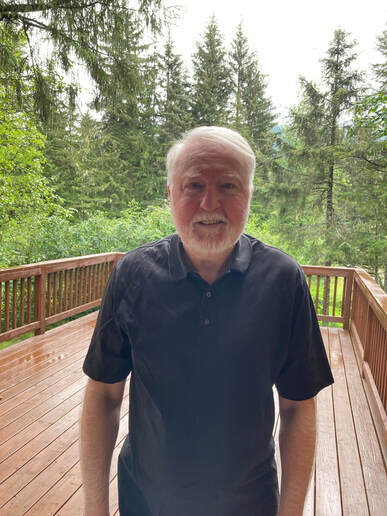Mark JohnsonBoard President
Mark Johnson was born in Anchorage and has lived in Anchorage, Seattle, Juneau, Portland, Washington, D.C. and Sacramento. He has worked as a congressional and legislative aide, prosecutor, assistant municipal attorney, utility manager and public utilities attorney. He served as a commissioner and chairman of the Regulatory Commission of Alaska from 2003 to 2009. He recognizes that the criminal justice system is functional but imperfect. "To deprive a person of liberty for a crime they did not commit strikes me as one of the greatest errors our society can make. The Alaska Innocence Project can help correct these errors."
Linda WilsonBoard Member
I moved to Alaska as a girl in 1965. After graduating from Dimond High School I went off to college and law school and returned to Alaska in 1977 to stay. After a short stint in private practice, I joined the Alaska Public Defenders in 1984 and continued to practice criminal defense law for the rest of my career.
Around 2004 a group of concerned Alaskans started meeting to put together an Alaskan Innocence Project. We met for several years and finally created the Alaska Innocence Project in 2006. I have been involved with the project since its inception because I feel it is so important that we continue to assist wrongfully convicted Alaskan prisoners who have exhausted all other avenues of appeal and post-conviction to prove their innocence. I am very proud of what we have accomplished in the last 16 years, but there is so much more to be done. Ann CaindecBoard Member
|
Kevin TrippBoard Secretary
Unlike most of the Alaska Innocence Project (AKIP) board members I’ve had the honor of knowing, I’m not a lawyer, much less a defense attorney. I studied history, demography, sociology, and archives management. The sociology department included several criminologists, at the time—and in one of their seminars I first learned about the work of Elizabeth Loftus, regarding the unreliability of eyewitness testimony (I recall the professor joking, “If you ever want to get thrown off of a jury for a criminal trial, just mumble Elizabeth Loftus’s name”). It made a lasting impression. Around the same time, I saw Errol Morris’s groundbreaking 1988 documentary, THE THIN BLUE LINE—a film that was ultimately responsible for getting a man off of death row, and released from prison. The view the film presented of how our criminal justice system works (or, at least, how it works some of the time) also left a lasting impression. Some years later, after I’d moved to Alaska, I attended a fundraiser for the AKIP—a lecture given by Peter Neufeld, one of the co-founders of the Innocence Project (the national organization, founded in 1992). What he said that day resonated with me, and it wasn’t long after that I found myself serving on the AKIP Board of Directors.
Denise MorrisBoard Member
Amanda HenryBoard Member
|
Bob Spitzfaden |
|
Board Member
|
|
|
I was born and raised in a suburb of Cincinnati, Ohio. I got my undergraduate degree from Dartmouth College and my law degree from George Washington University. I have practiced law in Alaska since 1977, first in Anchorage until 1984, then I moved to Juneau where I have practiced ever since primarily civil litigation and commercial office work.
The justice system, because it is operated by imperfect humans, makes mistakes – including wrongfully convicting the innocent. I can imagine no worse fate than being incarcerated when you know you are innocent. My first experience of the failings of the system came the summer before I started law school in Washington, DC. I worked at a convenience store in the Virginia suburbs. One night while I was operating the cash register, the store was robbed - the robber showed me his gun and had me give him the cash in the register. The detective came to the store that night, but refused to take fingerprints from the counter, which the robber had touched. Instead, they took me to the station to show me a book of mug shots, none of which were the robber. I also met with a sketch artist. The artist turned out to be a guy with a book full of faces, noses, eyes, ears, etc. He did not sketch anything. I chose from the book and the guy pasted them together to make a wanted poster. I told the guy and the detective that the “sketch” had no resemblance to the robber. Nevertheless, the next day the detective used the image on a wanted poster. Later, a regular and her son came into the store. They looked at the poster and said it looked like “Larry”. Larry and his buddies hung out in the parking lot and frequented the store. I knew and got along with Larry. Larry was not the robber. A few days later the detective had me go to the station and look through more books full of mug shots. This time Larry was one of the mug shots, but once again, the robber was not in the book. I told the detective that none of the photographs were of the robber. Adamant, the detective said the robber was in the book and that I should look again. The detective urged me to reconsider, but again I said the robber was not in the book. It was clear to me the detective was urging me to finger Larry as the robber. I did not. The robber was never caught. This experience showed me that human error was a part of the system and had to be guarded against. It informed my subsequent legal career and fuels my ongoing support for the Alaska Innocence Project. |
|






